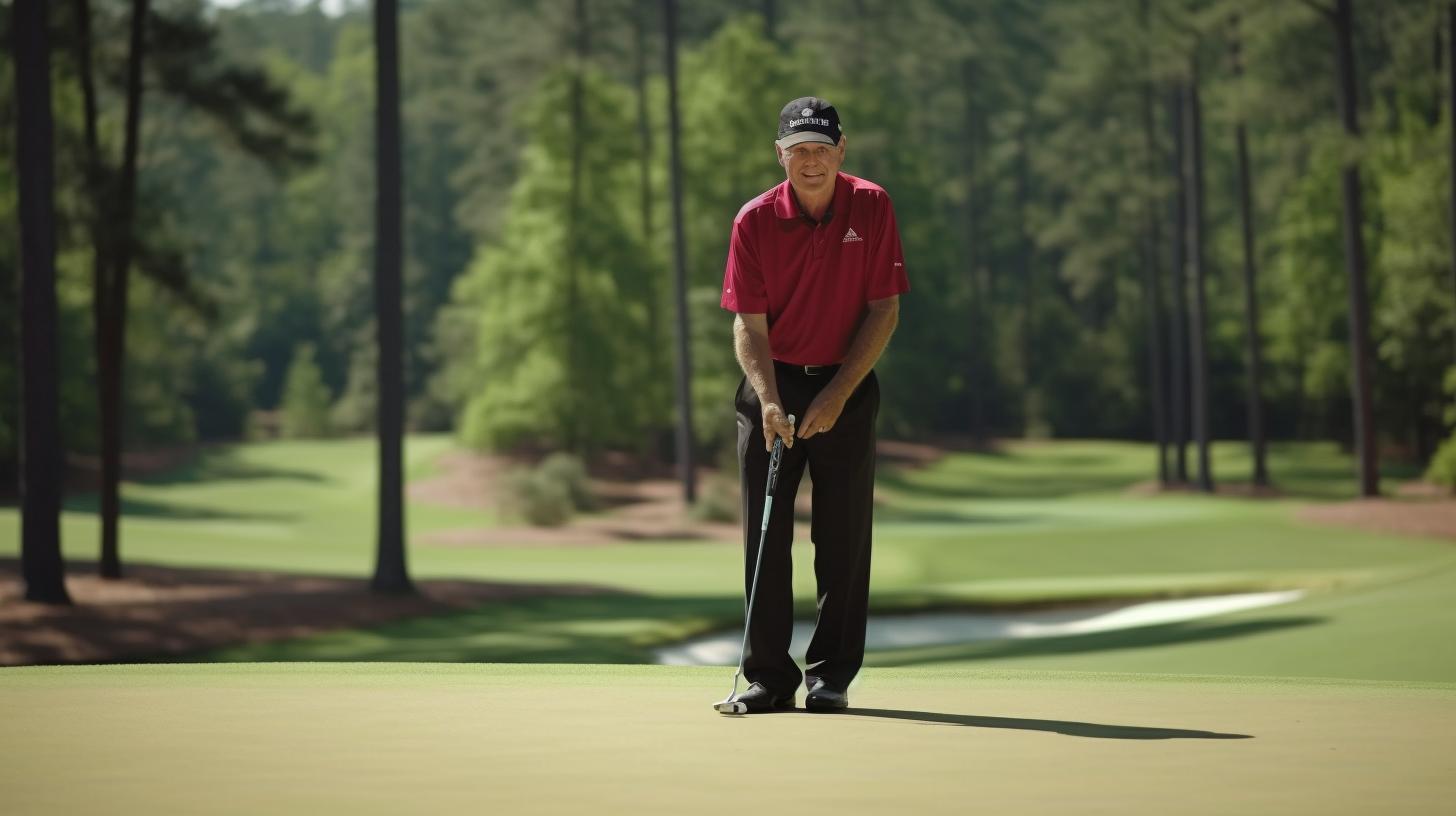
What is ball rollback in golf? Ball rollback refers to the concept of restricting the distance that a golf ball can travel, primarily in response to advances in golf club technology and swing techniques. The debate surrounding this issue has sparked conversations and controversies within the golf community, with various perspectives being presented by professional golfers, equipment manufacturers, and course designers.
The history of ball rollback in golf dates back to the introduction of new materials and manufacturing processes for golf clubs, as well as changes in the way players approach their swings. As a result, modern golf balls can be propelled further and with greater accuracy than ever before, leading some to argue that such advancements have altered the fundamental nature of the sport.
This article will delve into the impact of ball rollback on both equipment and courses, considering how restrictions on ball distance could necessitate significant adjustments in design and playstyle. Additionally, we will explore the potential solutions to this issue and offer predictions for its future implications on the game of golf.
The History of Ball Rollback in Golf
Ball rollback in golf has been a topic of discussion in the golfing community for several years. The concept of ball rollback refers to the idea of limiting the distance and control that modern golf balls have, which has led to longer distances off the tee and a shift in the way golf courses are designed. This section will explore the history of ball rollback in golf, tracing its origins and evolution within the sport.
The debate on ball rollback can be traced back to the 20th century when advancements in technology began to significantly impact golf equipment. As golf clubs and balls became more technologically advanced, players were able to hit longer shots with greater precision. This led to concerns about how these advancements were affecting the integrity of the game and forcing changes in course design.
The issue gained even more attention starting in the early 2000s when professional golfers started hitting unprecedented distances off the tee. The increased focus on fitness and athleticism, coupled with advancements in club and ball technology, prompted discussions among governing bodies and industry experts about implementing measures to regulate ball performance.
As a result, there has been ongoing debate within the golf community about whether or not ball rollback is necessary to preserve the traditions of the game while also addressing issues related to course sustainability and fairness for all players.
- The birth of ball rollback discussions
- Impact of technology on distance and control
- Concerns about changing course design
The Impact of Ball Rollback on Golf Equipment
When it comes to golf clubs, the impact of ball rollback has led to discussions about adjusting club specifications and materials to compensate for potential changes in distance. Manufacturers may need to reevaluate the design of drivers, irons, and other clubs to ensure that they still provide an optimal performance on the course. Additionally, golf balls themselves may need to be modified or regulated in order to address concerns about distance.
In terms of golf equipment regulations and standards, the impact of ball rollback is a complex issue. Governing bodies such as the USGA (United States Golf Association) and R&A (The Royal and Ancient Golf Club) have a responsibility to maintain fairness and integrity within the game.
This includes establishing rules that ensure a level playing field for all golfers. As discussions about ball rollback continue, it is likely that these organizations will play a crucial role in shaping the future of golf equipment.
- Adapting club specifications
- Modifying golf ball design
- Golf equipment regulations and standards
The Debate Surrounding Ball Rollback in the Golf Community
The Argument for Ball Rollback
One side of the debate surrounding ball rollback in golf argues that the advancements in golf ball and club technology have resulted in significant changes to the game, ultimately impacting the skill and strategy required to play. Proponents of ball rollback believe that limiting the distance a ball can travel would help restore some of the traditional elements of the game, such as shot-making and course design, and make it more accessible to amateur players.
The Argument Against Ball Rollback
On the other hand, opponents of ball rollback assert that restricting ball distance would stifle innovation within the sport and potentially alienate casual players. They argue that golf has evolved along with technology, and attempting to roll back advancements in equipment would be contrary to this natural progression. Additionally, there are concerns about how rolling back balls might affect professional golf tournaments and their financial interests.
Finding Common Ground
Amidst the ongoing debate over ball rollback in golf, many within the community are seeking a middle ground that respects both tradition and progress. Some propose alternative measures, such as adjusting course designs or creating separate sets of rules for professional and amateur play. While finding common ground may present challenges, it remains a priority for many stakeholders as they seek to preserve the integrity and spirit of the game while embracing technological advancements.
The Effect of Ball Rollback on Golf Courses
Golf courses around the world have been greatly affected by the issue of ball rollback in golf. The term “ball rollback” refers to the regulation and modification of golf balls to reduce their distance, thereby impacting the way they interact with the course. One of the main concerns surrounding ball rollback is that longer distances negatively alter the way golf courses are designed and maintained.
With advancements in golf equipment technology, such as more powerful clubs and high-performance balls, golf courses have had to adapt to accommodate for the increased distance that golfers can achieve. This has led to changes in course layouts, including lengthening holes, relocating hazards, and altering green complexes.
Furthermore, ball rollback has also put financial pressure on golf courses as they strive to keep up with the demands of modern technology. Many older courses are unable to make significant changes to their layout, which means they may become obsolete or less attractive for professional tournaments or avid players who are accustomed to longer distances.
In response to these challenges, some golf courses have adopted strategies such as increasing maintenance costs to keep roughs and fairways at a higher level of difficulty. However, it is important for course owners and designers to find a balance between preserving tradition and adapting to modern trends in order to maintain the integrity of the game while embracing progress.
| Impact | Details |
|---|---|
| Course Layout Changes | In response to increased distance from advanced equipment. |
| Financial Pressure | Older courses may struggle to keep up with technological demands. |
| Maintenance Costs | Some courses increase maintenance costs in order to maintain difficulty levels. |
Professional Golfers’ Perspectives on Ball Rollback
Professional golfers have varying perspectives on the issue of ball rollback in golf. Some believe that changes need to be made to golf equipment regulations in order to maintain the integrity and challenge of the game.
These professionals argue that advancements in technology have led to increased distances off the tee, making some courses obsolete and altering the traditional skill set required for success in professional golf. They argue that these changes have led to a lack of variety in course layouts and an overemphasis on power as opposed to accuracy.
On the other hand, there are professional golfers who believe that the current state of the game is just part of its natural evolution. They assert that golf has always been subject to technological advancements and adaptations and that these changes ultimately benefit the sport by attracting more fans and players. They also point out that longer distances achieved through modern equipment can lead to more excitement for spectators and viewers.
Some professional golfers are suggesting a bifurcation of rules, with different equipment regulations for amateurs versus professionals. This would allow amateur players to continue enjoying advancements in technology while maintaining control over distance for professionals. Others believe that alterations should be made exclusively at the professional level, such as reducing ball flight or implementing a standardized ball for all professional events.
| Professional Golfers Perspectives | Key Points |
|---|---|
| Regulation Changes | Some advocate for changes in equipment regulations |
| Natural Evolution | Others see it as part of golf’s natural evolution and beneficial for the sport |
| Potential Solutions | Suggestions include bifurcation of rules or alterations at professional level only. |
The Potential Solutions to the Ball Rollback Issue
The debate surrounding ball rollback in golf has sparked discussions and controversies within the golf community. As technology continues to advance, the issue of distance gains from modern equipment has led to calls for potential solutions to address the impact of ball rollback on the game.
Regulations and Restrictions
One potential solution to ball rollback in golf is the implementation of regulations and restrictions on equipment. Governing bodies such as the United States Golf Association (USGA) and the R&A have been considering various options to address distance gains, including limiting ball flight and distance through equipment standards. This could involve imposing a maximum limit on the distance a golf ball can travel, which would require manufacturers to adapt their designs accordingly.
Course Design and Maintenance
Another solution involves making adjustments to golf course design and maintenance. By incorporating strategic changes to course layouts, such as adding hazards or altering hole distances, golf courses can mitigate the impact of prolonged distances resulting from advancements in equipment. Furthermore, maintaining course conditions that increase resistance, such as longer roughs or firming up fairways, can help offset some of the advantages gained from enhanced technology.
Collaboration With Equipment Manufacturers
Collaborating with equipment manufacturers presents another potential solution to address ball rollback in golf. By working together with industry leaders, governing bodies can achieve a balance between technological innovation and preserving the traditional essence of the game. This could involve engaging in dialogue with manufacturers to explore alternative materials or design features that maintain competitiveness while addressing concerns related to excessive distance gains.
By considering these potential solutions and exploring other alternatives, it may be possible to find a balanced approach that addresses the impact of ball rollback on golf while ensuring that the sport continues to evolve responsibly.
The Future of Ball Rollback in Golf
In conclusion, the debate over ball rollback in golf continues to spark controversy within the golf community. With the advancement of technology and the increasing distance that golf balls can travel, there is a growing concern about the impact on the game. The history of ball rollback reveals a consistent effort by governing bodies to find a balance between preserving traditional aspects of the sport and embracing technological advancements.
Professional golfers have voiced their opinions on both sides of the issue, with some advocating for restrictions on equipment while others argue for maintaining the status quo. The potential solutions to ball rollback vary, with proposals such as implementing different standards for professional and amateur play, adjusting course design, or creating specific tournament regulations.
As the future of ball rollback remains uncertain, predictions and speculations continue to surface. It is probable that governing bodies will continue to evaluate and potentially implement changes to address this issue in efforts to maintain the integrity and challenge of the game.
Whether this involves modifications to equipment regulations or rethinking course designs, it is evident that finding a resolution will be critical in shaping the future of golf. Ultimately, what is ball rollback in golf may continue to shape discussions within the sport for years to come.






